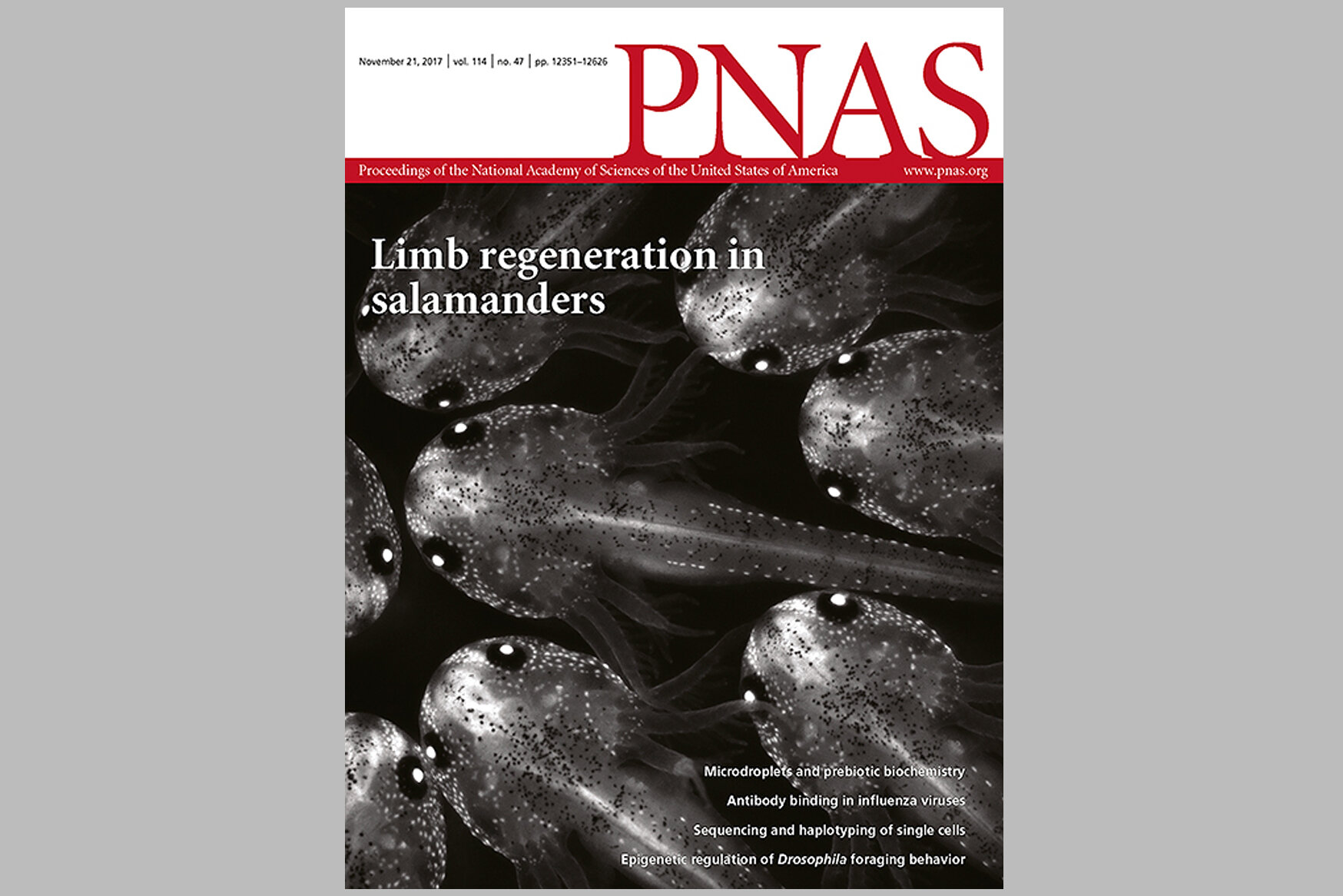Scientists insert genes into axolotls to trace muscle stem cells
An international team of scientists led by the IMP’s Elly Tanaka has created the first knockin individuals of the salamander species axolotl, whereby a gene normally not present was inserted into an animal. In these knockin axolotls, the scientists could trace the fate of muscle stem cells during the regeneration of limbs.
Salamanders such as the Mexican axolotl species have a great capacity to regenerate severed body parts such as limbs or organs. Therefore, they have become important model organisms to study the mechanisms underlying regeneration.
For scientists, being able to switch genes on or off is important to study their function – the resulting animals are called “knockin” or “knockout”, respectively. Biologists have used different techniques to create such variations in many model organisms. In salamanders, unfortunately, genetic studies were constrained by the lack of gene knockin strategies.
An international team of scientists led by IMP senior scientist Elly Tanaka has now established an efficient knockin-technique using the gene editing tool CRISPR/Cas9. The technique allowed the scientists to genetically mark two stem cell pools critical for limb and spinal cord regeneration.

With these labels, the scientists could map the fate of the stem cells by tracking their lineages in the course of the occurring regeneration of limb muscles. In particular, they could demonstrate that PAX7+ satellite cells are a major source contributing to the formation of muscle during limb regeneration.
The new method, which is published this week in the journal PNAS, opens up a key functionality required for a precise understanding of processes such as regeneration: “We can now mark and perturb the functions of genes in any definable cell population in the axolotl”, says Jifeng Fei, first author of the study.
By establishing this powerful method, the scientists created a key genetic tool for molecular and cellular experiments in the most important model system for regeneration.
Original Publication
J. Fei, M. Schuez, D. Knapp, Y. Taniguchi, David N. Drechsel, and E. Tanaka (2017): „Efficient gene knockin in axolotl and its use to test the role of satellite cells in limb regeneration”. PNAS.
Supplementary material: www.pnas.org/lookup/suppl/doi:10.1073/pnas.1706855114/-/DCSupplemental
More on regeneration research at the IMP:
About the IMP
The Research Institute of Molecular Pathology (IMP) in Vienna is a basic biomedical research institute largely sponsored by Boehringer Ingelheim. With over 200 scientists from nearly 40 nations, the IMP is committed to scientific discovery of fundamental molecular and cellular mechanisms underlying complex biological phenomena. Research at the IMP addresses topics in molecular and cellular biology; structural biology and biochemistry; gene expression and chromosome biology; stem cell biology and development; immunology and cancer; and neuroscience. The IMP is located at the Vienna BioCenter.
About the Vienna BioCenter
Vienna BioCenter (VBC) is a leading life sciences hub in Europe, offering an extraordinary combination of research, business and education in a single location. About 1,700 employees, 86 research groups, 18 biotech companies, 1,300 students, and scientists from 69 nations create a highly dynamic and stimulating environment. http://www.viennabiocenter.org
Related Documents
- Illustration (c) IMP-IMBA Graphics Department (jpg, 8 MB)